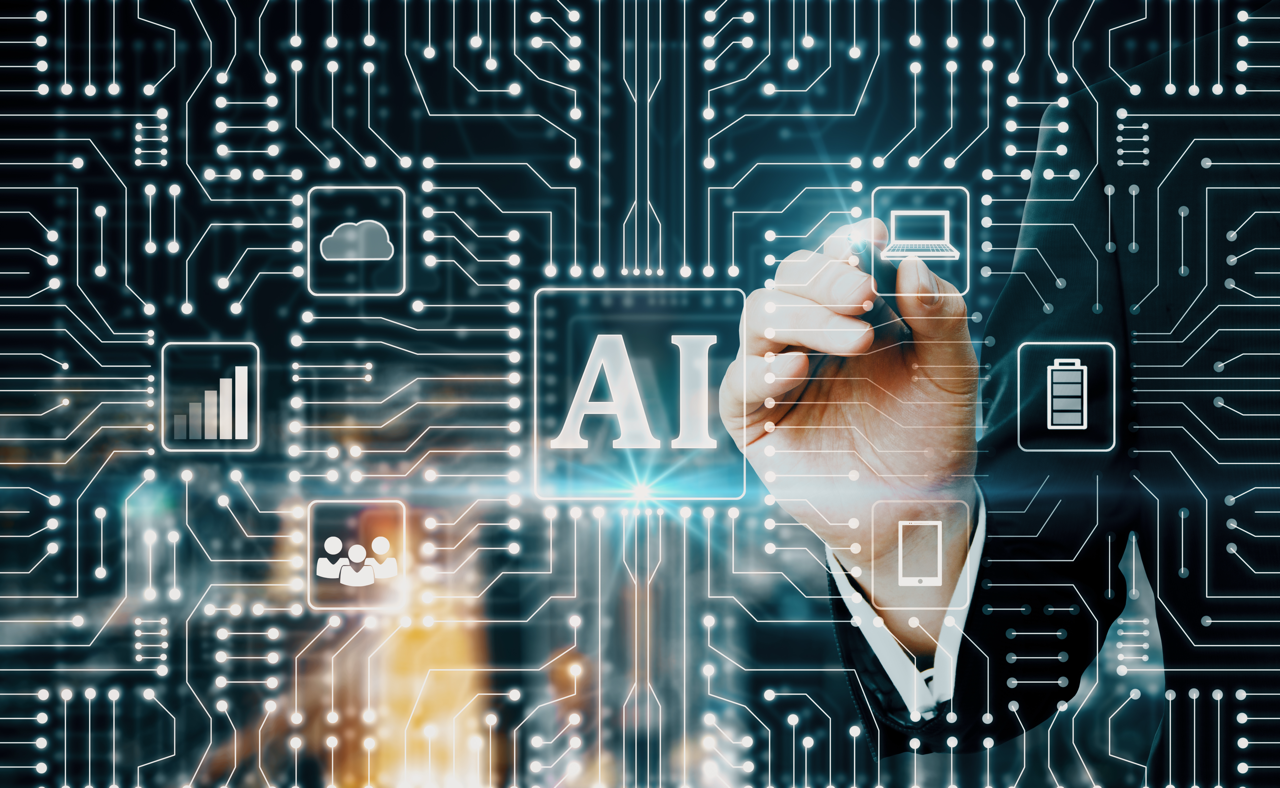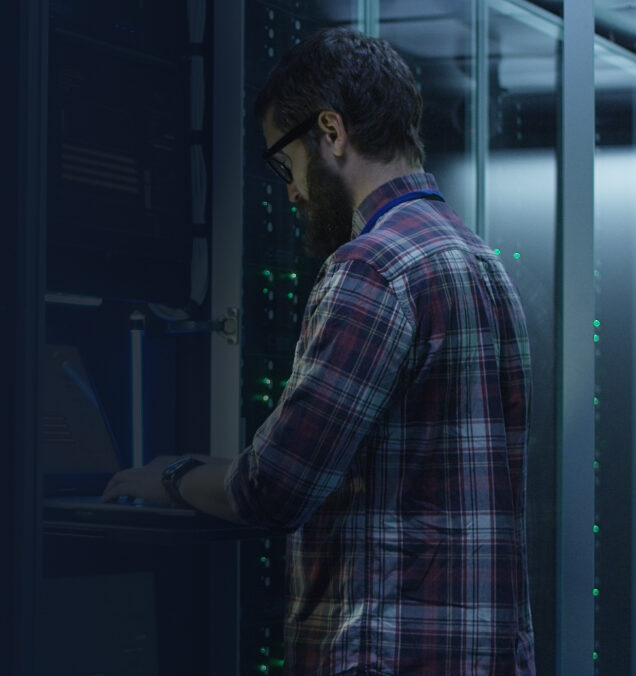Adoption Roadmap: Introducing Agentic AI into Your Existing IT Infrastructure
Many IT teams still rely on manual systems to manage their infrastructure. They patch servers, monitor dashboards, and troubleshoot issues by hand.
As environments expand across hybrid platforms, edge devices, and AI workloads, this approach no longer scales. Modern infrastructure needs automation that can adapt to change in real time.
Agentic AI is intelligent software agents that use data from your systems to observe conditions, decide on the best response, and take action automatically. They can detect anomalies, identify root causes, and carry out corrective steps with minimal human intervention.
In this article, we’ll discuss what agentic AI is, how it works, the benefits of this technology, and what roadmap to adopt to modernize your existing IT infrastructure.
Key Takeaways
- Agentic AI automates IT operations using intelligent software agents. These agents observe system data, analyze patterns, decide on responses, and execute actions automatically.
- The technology works through the OODA loop. Agents continuously Observe system metrics, Orient by interpreting data, Decide on the best response, and Act by executing solutions through existing tools and APIs.
- Benefits include reduced downtime and better resource efficiency. Agentic AI detects anomalies early, predicts failures before they happen, and optimizes hardware and energy usage.
- Start adoption with pilot projects in controlled environments. Test the technology on specific workflows like log analysis or anomaly detection first. This builds team confidence and proves value before scaling to larger operations.
- Strong infrastructure is essential for success. Agentic AI requires high-performance computing systems, clean data, and proper governance. Upgrading servers, GPUs, and networking hardware creates the foundation needed for effective deployment.
What is Agentic AI and How Does it Work?
Agentic AI refers to the use of intelligent software agents that can make autonomous decisions based on data, context, and goals. These agents are built on large language models (LLMs), which are advanced AI systems trained on vast amounts of technical and operational data.
Agentic AI operates through a continuous decision-making process, known as the OODA loop: Observe, Orient, Decide, and Act.
- Observe: The agent collects data from system metrics, logs, and telemetry.
- Orient: It interprets the data, comparing it with past patterns or known configurations to understand what is happening.
- Decide: Based on that analysis, it determines the best response, such as scaling resources, applying a patch, or alerting an engineer.
- Act: The agent executes the decision automatically through existing tools, like APIs, orchestration platforms, or command-line interfaces.
According to Zhenning Yang et al., “Infrastructure management tasks are highly structured and repetitive, which helps constrain the problem space for agents.” Most IT work follows clear rules and patterns. For example, updating software, checking system health, or managing servers all follow predictable steps.
Agentic AI brings intelligence to the core of IT operations, allowing infrastructure to monitor, adapt, and even repair itself in real time. This helps IT teams automate routine tasks, performance anomalies, and recovery efforts without constant human direction.
Benefits of Agentic AI
Agentic AI brings measurable improvements to how IT teams manage, monitor, and maintain systems. Here are some benefits of Agentic AI:
Reduced Manual Workload
Agentic AI handles repetitive operational tasks such as patching, configuration updates, and routine system checks. This reduces the amount of time engineers spend on maintenance and allows them to focus on higher-value work like optimization and planning.
Faster Problem Detection and Resolution
Agents monitor system data in real time and detect anomalies before they become incidents. They can identify the root cause, propose a solution, or even carry out corrective actions automatically.
This reduces downtime and improves response times during emergencies.
Improved System Reliability
Agentic AI helps AI data centers and companies run more reliably by learning from past events and adapting to changing workloads. It detects patterns that cause failures, predicts issues before they occur, and takes preventive action automatically.
Over time, it builds a knowledge base of recurring problems, making systems more resilient and better prepared to handle new models and datasets without disruption.
Continuous Optimization
Agentic AI constantly analyzes performance data to find ways to improve efficiency. It can rebalance workloads, adjust resource allocations, and maintain service levels without waiting for human intervention.
Smarter Use of Resources
Agents can optimize hardware and energy usage by continuously learning how your systems behave. This helps reduce costs, extend hardware life, and improve sustainability across your IT infrastructure.
Scalable Operations
As your infrastructure grows across hybrid, on-premises, and edge environments, agentic AI scales with it. It can manage thousands of components while maintaining centralized visibility and control.
How to Adopt Agentic AI in Your IT Infrastructure: A Complete Roadmap
53% of enterprise IT leaders expect expansion in AI-dedicated on-premises or colocated data centers to handle growing workloads.
As AI workloads expand, Agentic AI has the ability to support intelligent automation. It works best in environments where tasks are rule-based and data-rich. But to actually use this technology, your infrastructure needs to have reliable hardware, clean data, and strong governance.
Here’s a roadmap you can use to adopt agentic AI in your IT systems:
1. Assess Your Current Operations
Start by reviewing how your infrastructure is managed. Identify where your teams spend the most time on repetitive work, such as patching, monitoring, reporting, or incident response.
These areas are the best candidates for early automation. Also, evaluate whether your operational data is ready for AI use. You need to maintain clean and consistent logs and telemetry data for accurate decision-making.
2. Prepare Your Physical Infrastructure
Before scaling agentic AI, make sure your hardware and computing environment can handle higher data and processing demands. High-performance computing (HPC) systems play a key role in supporting AI workloads.
Inteleca helps you optimize your infrastructure with tailored HPC solutions. Our team of experts upgrades your environment with optimized servers, GPU systems, and high-speed networking components. This allows you to run intensive workloads and deploy agentic AI confidently and at scale.
3. Start with Pilot Projects
According to the researchers from the University of Illinois, “Effective adoption starts with small-scale deployments focused on well-instrumented systems, where outcomes can be observed and measured.”
Select one or two specific workflows to automate. For example, you might introduce an agent to analyze log data, detect anomalies, or generate system reports. This helps your teams build confidence and understand how the technology behaves in real scenarios.
4. Integrate with Existing Tools
Agentic AI works best when connected to your current infrastructure management systems. These can include APIs, monitoring tools, configuration platforms, and orchestration frameworks.
Integration allows agents to act within the same interfaces your teams already use. This avoids disruption and helps maintain operational continuity.
5. Define Guardrails and Governance
Set clear boundaries for what AI agents can and cannot do. In the early stages, keep humans in control by having the system suggest actions that require approval before execution. As confidence builds, you can expand autonomy for low-risk or routine operations.
You also need to establish strong governance by maintaining detailed audit logs, real-time alerts, and clear operational policies. These safeguards make sure you maintain accountability, compliance, and trust.
6. Prepare Your Team for Change
Agentic AI is designed to assist, not replace, human expertise. Train your teams to understand how to work alongside AI systems. This can help them interpret insights, review automated actions, and manage exceptions with confidence.
Future-Proof Your IT Infrastructure for Agentic AI
As AI workloads increase, data centers and businesses need advanced solutions to process more data with less downtime and disruptions. Agentic AI is a powerful tool that can handle complex network operational roles. This includes identifying the problem, diagnosing the causes, and troubleshooting it.
But Agentic AI needs strong, reliable computing power to run well. It depends on servers, HPC GPUs, and networking hardware that can handle large amounts of data and real-time processing.
Inteleca offers custom HPC solutions to deploy Agentic AI into your infrastructure. Our team of experts helps build the physical foundation that lets Agentic AI do its job effectively.
We configure your HPC servers, upgrade old systems, and make sure your infrastructure has the power and capacity to support this technology.
Contact us to learn how Inteleca’s tailored solutions support Agentic AI adoption in your IT infrastructure.



